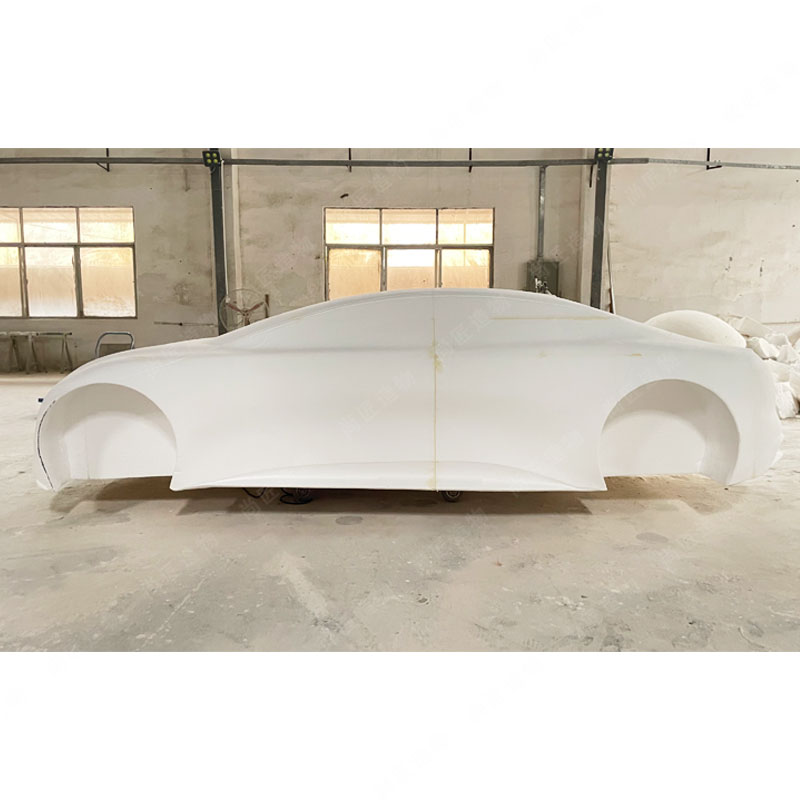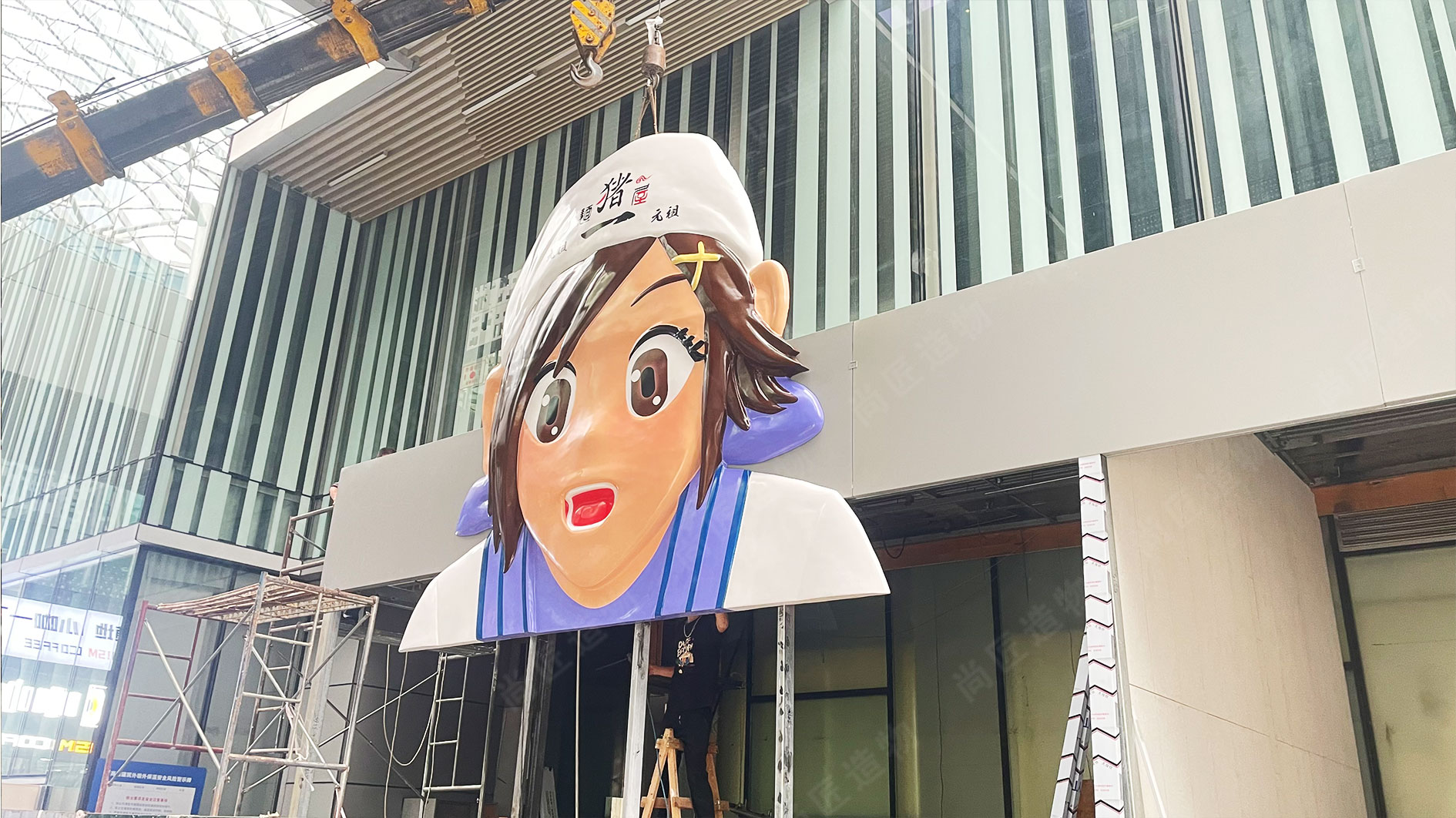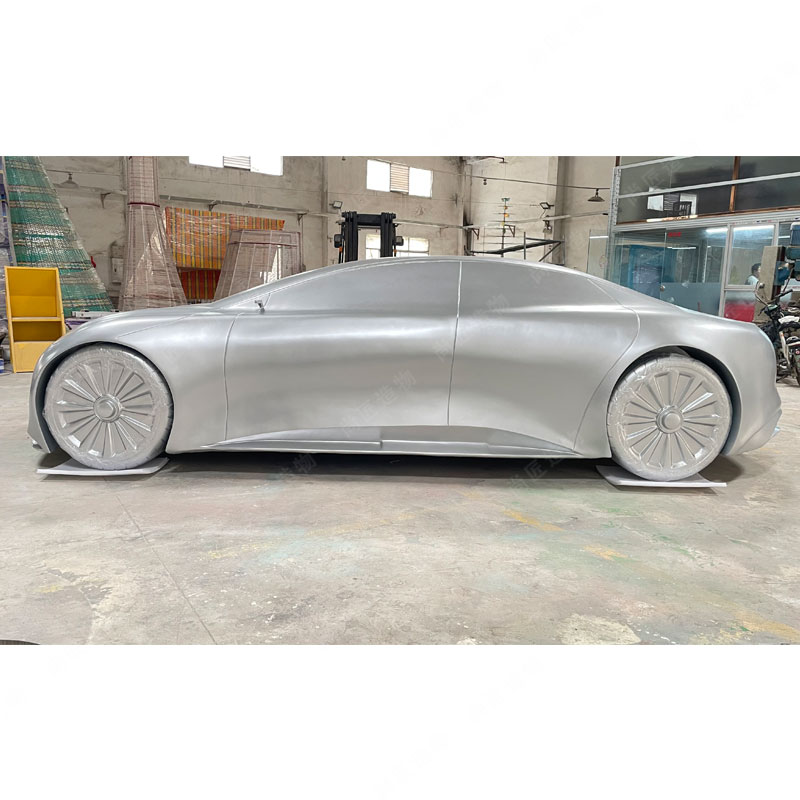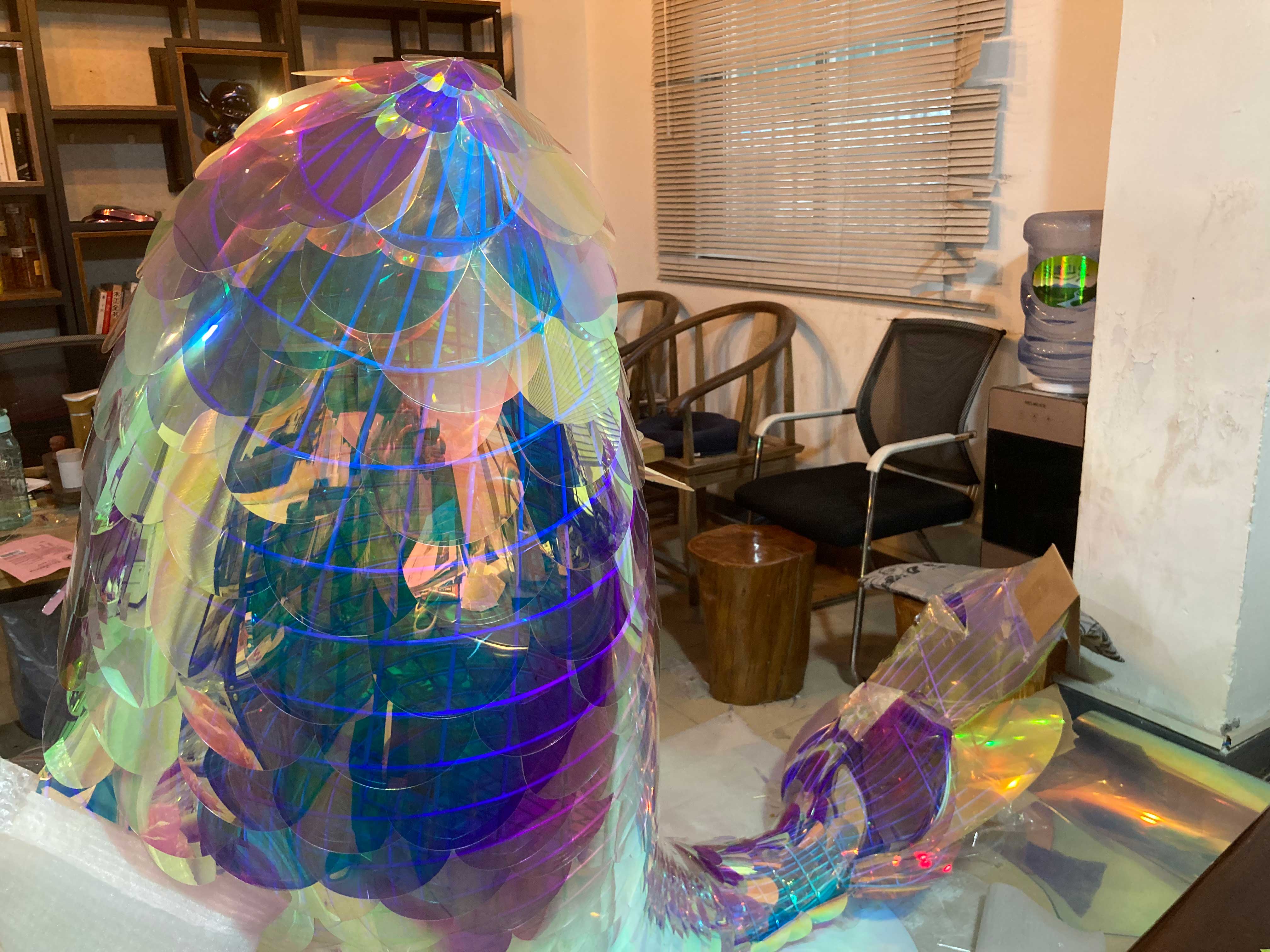Creating durable fiberglass sculptures involves innovative methods and a thoughtful approach to materials. Using alternative resources like high-density foam or natural fibers not only enhances strength but also encourages artistic exploration. Proper techniques play a crucial role; for instance, layering fiberglass cloth and implementing structural reinforcements increase resilience. Additionally, maintaining a clean workspace helps minimize surface flaws during the curing process, while experimenting with modern tools can streamline mold-making. By balancing creativity with durability, artists can push the boundaries of their work while ensuring that their sculptures remain visually striking and long-lasting.
Innovative Methods for Designing and Crafting Fiberglass Sculptures
When crafting fiberglass sculptures, it's essential to explore various innovative methods that enhance both strength and creativity. One approach to consider is incorporating alternative materials that can bolster durability without compromising the design. For example, blending fiberglass with sustainable resources like bioplastics can create a unique and resilient finish.
"Combining traditional techniques with modern materials opens new avenues for artistic expression."
Using 3D printing techniques to create molds can also streamline the design process and achieve intricate details more efficiently. Additionally, adding layers of woven fabric within the fiberglass can increase structural integrity while allowing for artistic textures and forms.
When working on larger pieces, reinforce joints and edges thoroughly to prevent cracking over time. This will ensure your fiberglass sculpture remains strong and aesthetically pleasing. These modern methods not only maintain the artistic essence but also enhance the longevity of your work, making them a smart choice for any sculptor looking to innovate in their craft.
For more creative ideas in sculpture-making, explore Cartoon sculptureto see how whimsical designs can transform traditional materials into captivating art forms.

Durability Meets Creativity: Exploring Alternative Materials in Fiberglass Art
When venturing into alternative materials for fiberglass sculptures, it's essential to balance durability with artistic expression. One noteworthy option is high-density foam, which can be shaped easily and provides a lightweight yet robust foundation. This allows artists to create intricate designs without the excessive weight. Another alternative is using natural fibers combined with eco-friendly resins, which not only enhance the structural integrity but also add a unique texture to the piece. Additionally, composites like carbon fiber can be integrated for added strength without compromising the overall design aesthetic.
Experimenting with these materials opens a pathway for innovative creations while delivering resilience, ensuring that sculptures withstand environmental challenges. Transitioning from traditional mediums encourages artists to rethink their approach, discovering new methods that uphold their creative vision while embracing durability in fiberglass art.
| Material | Benefits | Considerations |
|---|---|---|
| High-Density Foam | Lightweight, easy to shape | May require surface treatment |
| Natural Fibers + Eco-Resins | Enhanced texture and sustainability | Cost may vary |
| Carbon Fiber | High strength-to-weight ratio | Requires specialized skills for work |
For more insights on innovative designs in sculpture, check out IP character sculpture.

Strengthening Your Sculptures: Essential Techniques for Fiberglass Creation
To enhance the durability of fiberglass sculptures, it’s important to focus on several key techniques. First, ensure proper surface preparation by thoroughly cleaning the foam or base with isopropyl alcohol. This removes any residue that may hinder adhesion. When applying fiberglass, layering is crucial; using multiple thin layers of fiberglass cloth or mat can provide strength without adding excessive weight. Additionally, consider incorporating a resin with good tensile strength and flexibility to withstand various environmental factors. Another effective technique is to integrate structural reinforcements within the foam, such as wooden dowels or metal rods, which can help bear weight and resist cracking over time. Finally, always use high-quality mold release agents during the initial mold-making process to prevent damages in subsequent layers and ensure a smooth finish for your sculpture. By implementing these techniques, you can create robust fiberglass artworks that stand the test of time while retaining their artistic essence.
Creative Solutions for Common Challenges in Fiberglass Sculpture Making
Creating fiberglass sculptures often comes with a unique set of challenges. One common issue is the risk of surface imperfections due to dust or debris during the curing process. To combat this, artists should work in a clean environment and use drop cloths or barriers to shield their work. Additionally, maintaining proper temperature and humidity levels can significantly improve adhesion and finish quality.
Another challenge is the complexity of mold making. To simplify this aspect, consider using flexible silicone molds that can capture finer details and allow for easier release from the sculpture. For artists concerned about weight, incorporating lightweight fillers or using a foam core can enhance the structure's strength without adding unnecessary bulk. Finally, reinforcing thinner areas with additional layers of fiberglass can prevent cracking, ensuring that the final piece remains durable.
By adopting these strategies, artists can navigate common obstacles effectively while maintaining the integrity and beauty of their fiberglass sculptures. For further insights into creating realistic forms in sculptural art, explore topics related to Realistic sculpture.

Maintaining Artistic Integrity While Using Durable Materials in Sculpture
When working with durable materials in fiberglass sculpting, maintaining artistic integrity is essential. Artists can achieve this balance by thoughtfully selecting materials that complement their vision while ensuring longevity. For instance, employing high-quality resins that enhance the visual appeal without compromising structure can create stunning effects. Using additives such as pigments or fibers can add unique textures and colors, further expressing an artist's style. Additionally, incorporating lightweight supports or armatures can enhance the overall stability of the sculpture without detracting from the intended design. By combining creativity with durable options like Fiberglass sculpture, artists can push boundaries while preserving their original concept and aesthetic.
Future Trends in Fiberglass Sculpture: Blending Technology and Tradition
As artists continue to explore the possibilities within fiberglass sculpture, the integration of modern technology with traditional techniques is becoming increasingly prevalent. Artists are utilizing advanced tools, such as 3D printing and digital modeling software, to create more intricate designs. This technology allows for precise replication of forms and textures that might be challenging to achieve by hand. Additionally, the incorporation of renewable materials into the fiberglass process is gaining traction. Artists are experimenting with bio-resins derived from natural sources, offering an eco-friendly alternative that enhances sustainability without compromising on durability. This blend of innovation and heritage not only enriches the artistic process but also fosters a deeper appreciation for craftsmanship in contemporary art. As these trends evolve, they pave the way for a new era of fiberglass sculpture that respects traditional methods while embracing cutting-edge advancements.

How to Successfully Transition from Traditional to Fiberglass Sculptures
Transitioning from traditional materials to fiberglass can enhance both the longevity and versatility of sculptures. Begin by evaluating your current techniques and consider how they can adapt to fiberglass. Familiarize yourself with the properties of fiberglass, including its lightweight nature and strong durability, which differ significantly from materials like clay or metal. It's essential to experiment with mold-making techniques using materials like silicone rubber or plaster, as these are crucial in shaping your sculptures accurately. Practicing on smaller projects can help build confidence before tackling larger works. Understanding the curing process of resins and ensuring proper environmental conditions can significantly impact the final outcome. Engaging in workshops or online communities dedicated to fiberglass art can also provide valuable insights and support from experienced artists making similar transitions.

Conclusion
In conclusion, the journey of creating durable fiberglass sculptures is enriched by the innovative approaches and techniques explored throughout this article. By blending traditional artistic values with modern materials and methods, sculptors can enhance the strength and longevity of their work. The integration of alternative materials, such as natural fibers and high-density foam, not only improves durability but also expands creative possibilities. As artists navigate challenges associated with fiberglass sculpting, adopting best practices in preparation and technique can yield remarkable results. Embracing technology alongside time-honored practices opens new horizons for artistic expression while maintaining the integrity of their original vision. Thus, through continuous exploration and experimentation, the future of fiberglass sculpture appears promising, inviting artists to create masterpieces that endure both time and environmental elements.
FAQs
What are the benefits of using fiberglass for sculptures?
Fiberglass is lightweight, durable, and can withstand various environmental conditions, making it an excellent choice for both indoor and outdoor sculptures.
How can I ensure my fiberglass sculpture maintains its strength?
Proper surface preparation, using multiple thin layers of fiberglass, and integrating structural reinforcements are essential for enhancing strength.
What alternative materials can be combined with fiberglass?
Natural fibers, high-density foam, and eco-friendly resins can be integrated to improve texture and sustainability without sacrificing durability.
What challenges might I encounter while working with fiberglass?
Common issues include surface imperfections during curing and difficulties in mold making. A clean workspace and using flexible molds can help address these problems.
How do I transition from traditional materials to fiberglass?
Start by experimenting with smaller projects to understand the properties of fiberglass and practice essential techniques like mold-making for accurate shapes.
Can technology improve the process of creating fiberglass sculptures?
Yes, tools like 3D printing and digital modeling software allow for more intricate designs and precise replication of details that might be hard to achieve by hand.
 ch
ch English
English






